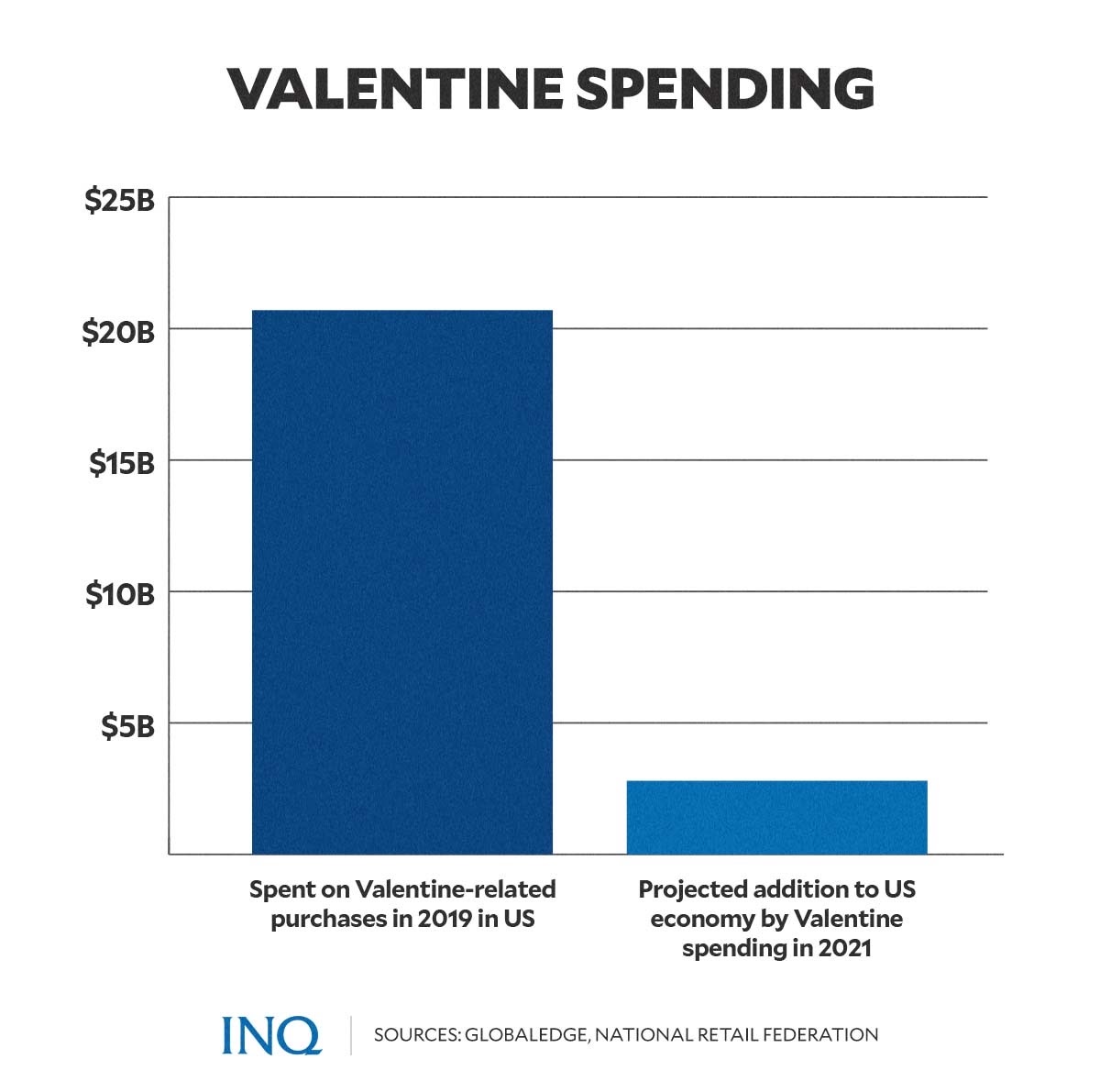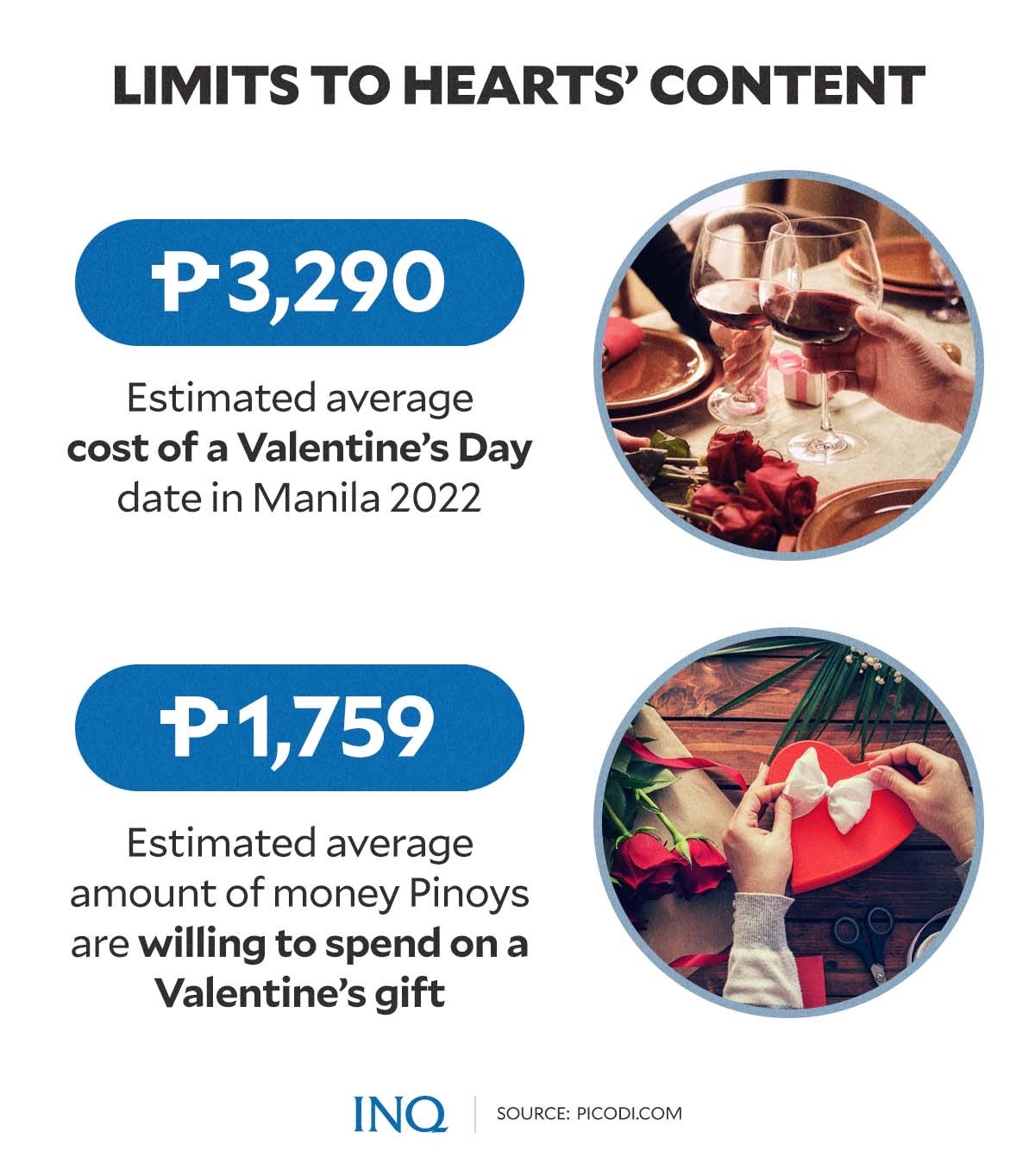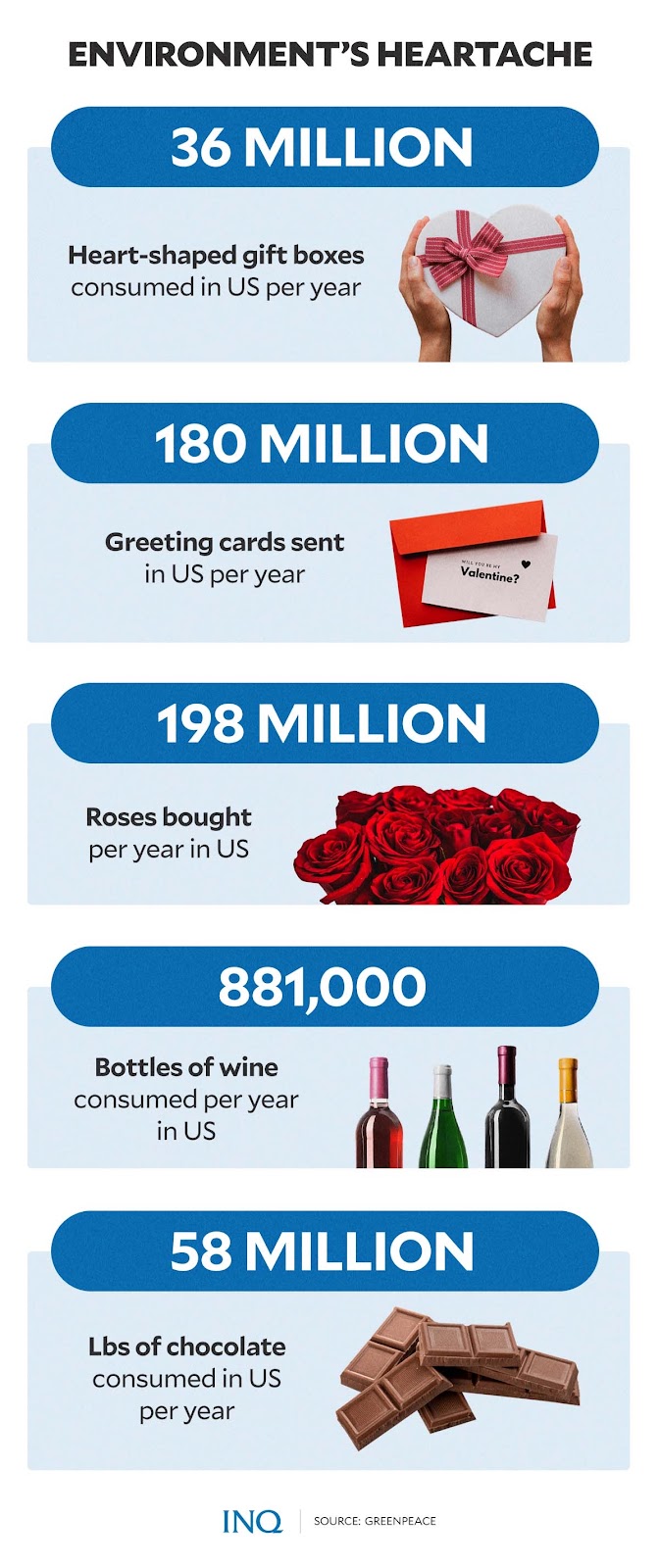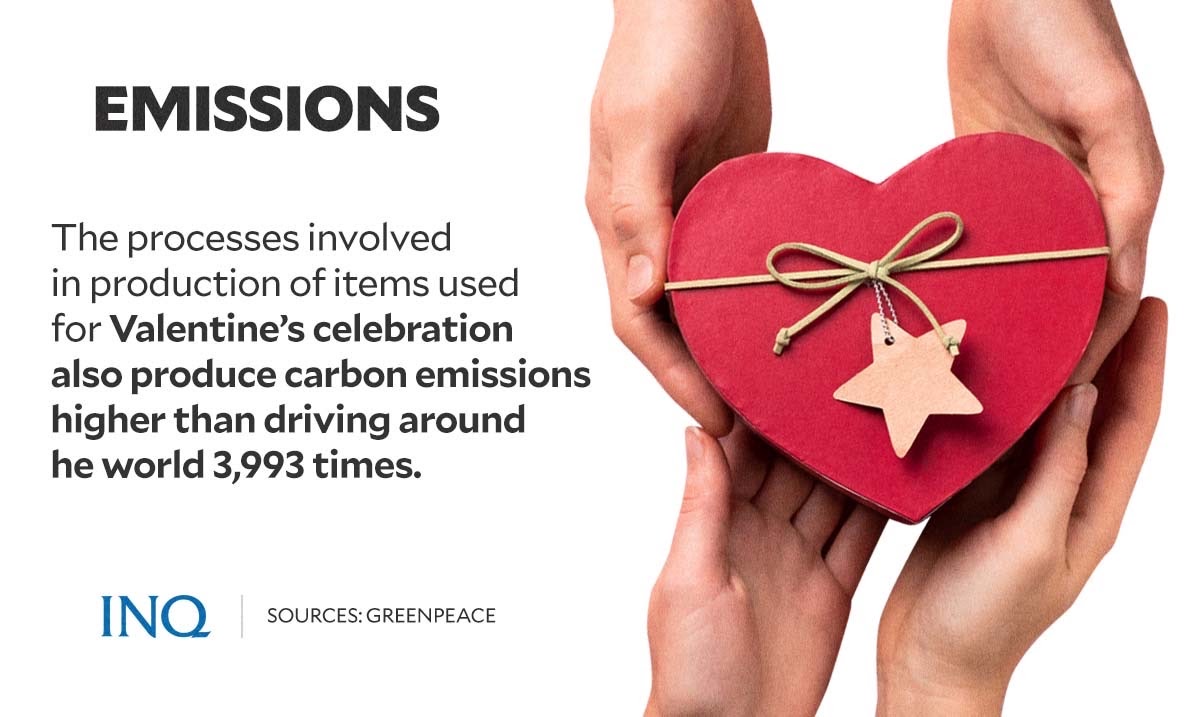Valentine’s Day: The costs of love
MANILA, Philippines—Around the globe, February 14 has always been more special than any other day of the same month. Almost everyone, if not all, recognizes Valentine’s Day—also called St. Valentine’s Day—as a holiday for love.
However, for the longest time, the annual celebration of Valentine’s Day has always been associated with capitalism. After all, the staple words commonly linked to the holiday included gifts or presents, chocolates, jewelry, flowers, greeting cards, restaurants, and how much these things cost.
Different historical accounts have variations on when exactly Valentine’s Day became a commercial holiday.
According to Encyclopedia Britannica, Valentines, in the form of formal messages, first appeared in the 1500s, and commercially printed cards dedicated for the holiday were being used as early as the 1700s.
The Encyclopedia Britannica likewise noted that the first commercial Valentines cards in the United States were printed in the mid-1800s.
Article continues after this advertisementNational Geographic said that the ever-popular tradition of giving Valentine’s Day cards first started in 1415 when the Duke of Orléans sent a card—the very first Valentine’s Day card—to his wife while he was a prisoner in the Tower of London.
Article continues after this advertisement“In the United States, Valentine’s Day cards didn’t gain popularity until the Revolutionary War, when people took up the habit of writing handwritten notes to their sweethearts,” the National Geographic said, referring to the war between Britain and the United States.
“It was only in the early 1900s that cards were mass-produced for the holiday,” it added.
Economics of love
As former National Economic and Development Authority (NEDA) director-general Cielito Habito wrote in a 2017 column published on INQUIRER.net, as time passes by, Valentine’s Day has become “an occasion less about loving and more about spending and profits.”
“Those in my generation would recall how Valentine’s Day in our younger days was an occasion for handmade cards and gifts. Well, not anymore,” Habito wrote.
“Now it’s more about mass-produced greeting cards and other commercially sold tokens of affection,” he added.
READ: Economics of love and Valentine’s Day
Past research has also pointed out that the special day has become a major pillar of the economy.
Valentine’s Day has also paved the way for the business of greeting cards to become a multibillion-dollar industry worldwide. At the same time, countries such as Columbia, Ecuador, the Netherlands, and some countries in Africa make the bulk of their flower exports during Valentine season.
Data from the International Business Center and the Eli Broad College of Business at Michigan State University’s (IBC) globalEDGE, detailed that in 2019, over $20.7 billion was spent in the United States (US) to celebrate Valentine’s.
The National Retail Federation (NRF) in the US stated that consumers were expected to add $2.8 billion to the US economy last year after only 52 percent of the US adults said they plan to celebrate Valentine’s Day that same year.
“There is no question the pandemic has disrupted many aspects of Americans’ daily interactions and activities,” said NRF president and CEO Matthew Shay.
“However, there remains a special significance around Valentine’s Day, and consumers are committed to celebrating friends and loved ones, even if that means having to alter those traditional holiday celebrations.”
Valentines price tag
How much money are Filipinos willing to spend on Valentine’s Day?
Data analysis website Picodi.com has calculated that this year, Valentine’s Day date in Manila—which consists of a dinner for two in a mid-price restaurant with wine and cinema screening—would cost a total of P3,290.
Among the cities around the world that were included in Picodi.com’s analysis, Manila was in the “cheaper half of the ranking”–in 12th place from the bottom.
In 2019, the website also found in a study that on average, Filipinos spend up to P1,759 on gifts. While the price tag might seem on the higher level, the study noted that it was the lowest amount spent on gifts compared to the other 37 countries included in the list.
When it comes to Valentine’s Day gifts, most women—around 46 percent—surveyed in 2019 listed flowers as one of the most desirable gifts during the yearly occasion.
It has also been an annual occurrence for flowers to have price hikes weeks or days prior to Valentine’s Day. Last year, the price of flowers sold at several flower markets in Metro Manila reportedly increased by almost 50 percent on eve of Valentine’s Day.
Beyond the holiday spotlight
However, beyond the gift cards, the flowers, the chocolates, the dates, and the money spent to celebrate the special one-day occasion, were issues often missed out on by many people.
“Valentine’s Day spenders often miss the fact that there are countless people around who are missing out on such love, and in certain cases, are even victims of this celebration,” said Habito in a 2012 column.
“Chocolates, for example, are associated with issues on child labor in cocoa farms in West Africa, which has given rise to an international campaign to pressure chocolate companies to sign the “Commitment to Ethical Cocoa Sourcing”,” he continued.
“The very industries feeding Valentine commerce are, in some cases, going against the very object of the day’s observance,” he added.
Another issue surrounding the annual celebration, which is often set aside, is its environmental costs or impact.
“Valentine’s Day is most couples’ favorite day, but this also happens to be a sad day for the environment because of disposable gift wrappers and single-use packaging scattered everywhere,” said Greenpeace, a global environmental campaign organization.
In the US alone, the estimated 36 million heart-shaped gift boxes, 180 million greeting cards, 198 million roses, 881,000 bottles of wine, and 58 million pounds of chocolate exchanged and consumed by 124 million adults per year could generate more carbon emissions than driving around the world 3,993 times.
Moreover, some people in the Philippines—including those who have been affected by natural disasters or have lost their jobs and source of income due to the COVID-19 pandemic—might not be able to or forgo the usual celebrations for Valentine’s Day.
“Perhaps if we could just divert a portion of what we had planned to spend for our significant other today to helping alleviate the plight of disaster victims, then we could have a more meaningful celebration of true love for those needing it most this Valentine’s Day,” said Habito.




